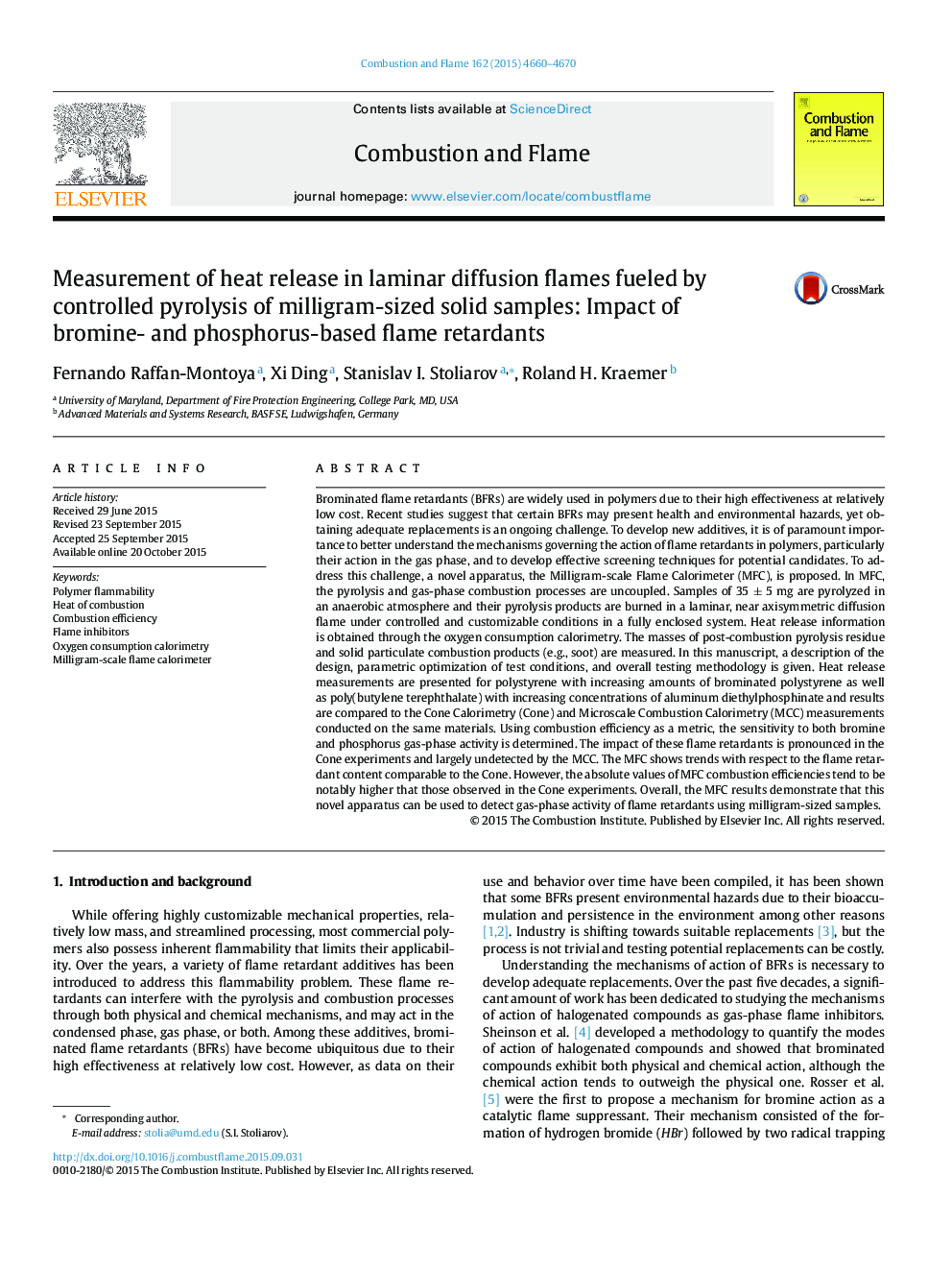| Article ID | Journal | Published Year | Pages | File Type |
|---|---|---|---|---|
| 168619 | Combustion and Flame | 2015 | 11 Pages |
Brominated flame retardants (BFRs) are widely used in polymers due to their high effectiveness at relatively low cost. Recent studies suggest that certain BFRs may present health and environmental hazards, yet obtaining adequate replacements is an ongoing challenge. To develop new additives, it is of paramount importance to better understand the mechanisms governing the action of flame retardants in polymers, particularly their action in the gas phase, and to develop effective screening techniques for potential candidates. To address this challenge, a novel apparatus, the Milligram-scale Flame Calorimeter (MFC), is proposed. In MFC, the pyrolysis and gas-phase combustion processes are uncoupled. Samples of 35 ± 5 mg are pyrolyzed in an anaerobic atmosphere and their pyrolysis products are burned in a laminar, near axisymmetric diffusion flame under controlled and customizable conditions in a fully enclosed system. Heat release information is obtained through the oxygen consumption calorimetry. The masses of post-combustion pyrolysis residue and solid particulate combustion products (e.g., soot) are measured. In this manuscript, a description of the design, parametric optimization of test conditions, and overall testing methodology is given. Heat release measurements are presented for polystyrene with increasing amounts of brominated polystyrene as well as poly(butylene terephthalate) with increasing concentrations of aluminum diethylphosphinate and results are compared to the Cone Calorimetry (Cone) and Microscale Combustion Calorimetry (MCC) measurements conducted on the same materials. Using combustion efficiency as a metric, the sensitivity to both bromine and phosphorus gas-phase activity is determined. The impact of these flame retardants is pronounced in the Cone experiments and largely undetected by the MCC. The MFC shows trends with respect to the flame retardant content comparable to the Cone. However, the absolute values of MFC combustion efficiencies tend to be notably higher that those observed in the Cone experiments. Overall, the MFC results demonstrate that this novel apparatus can be used to detect gas-phase activity of flame retardants using milligram-sized samples.
